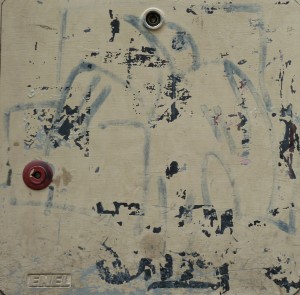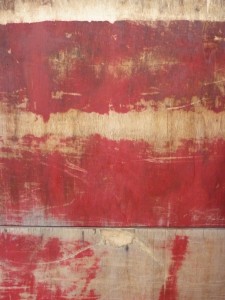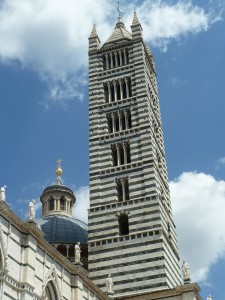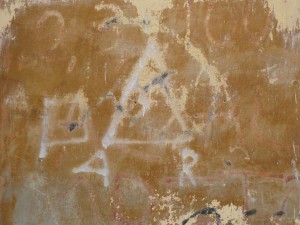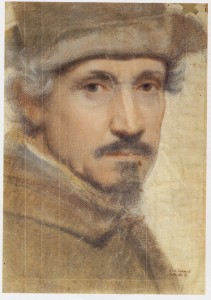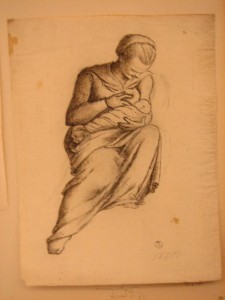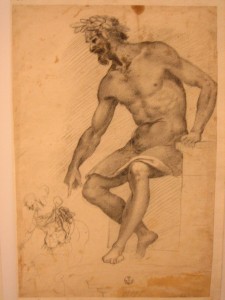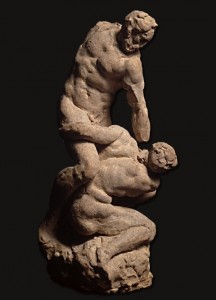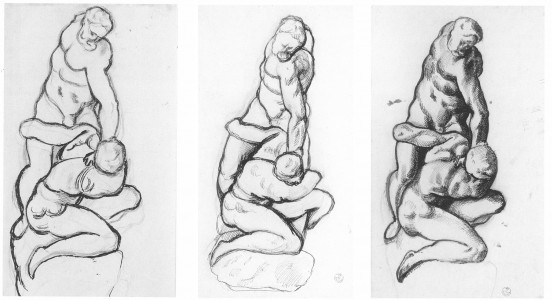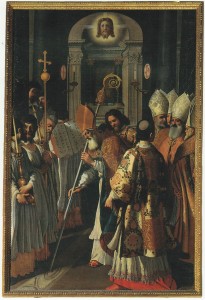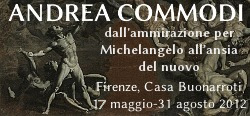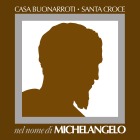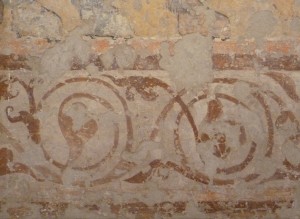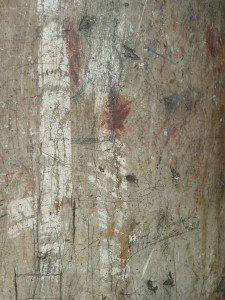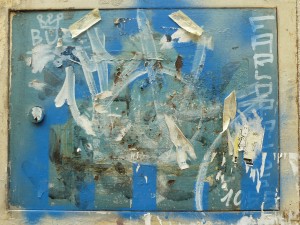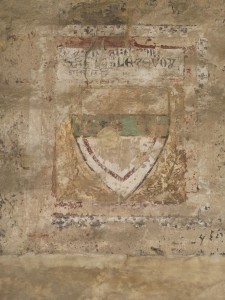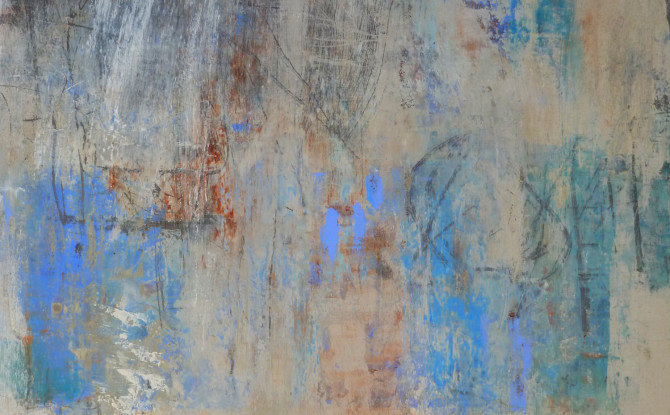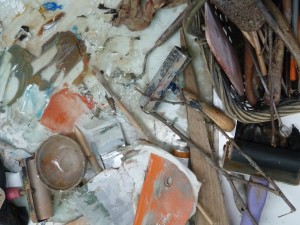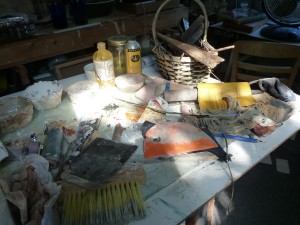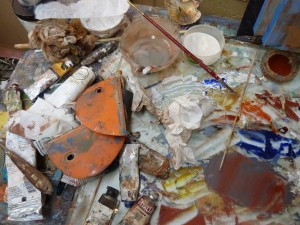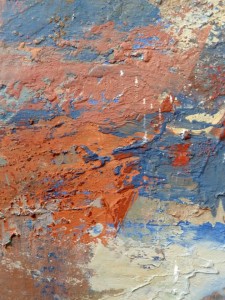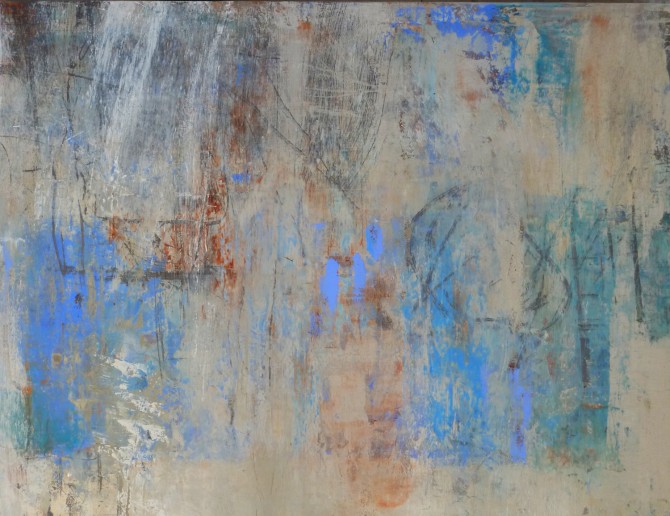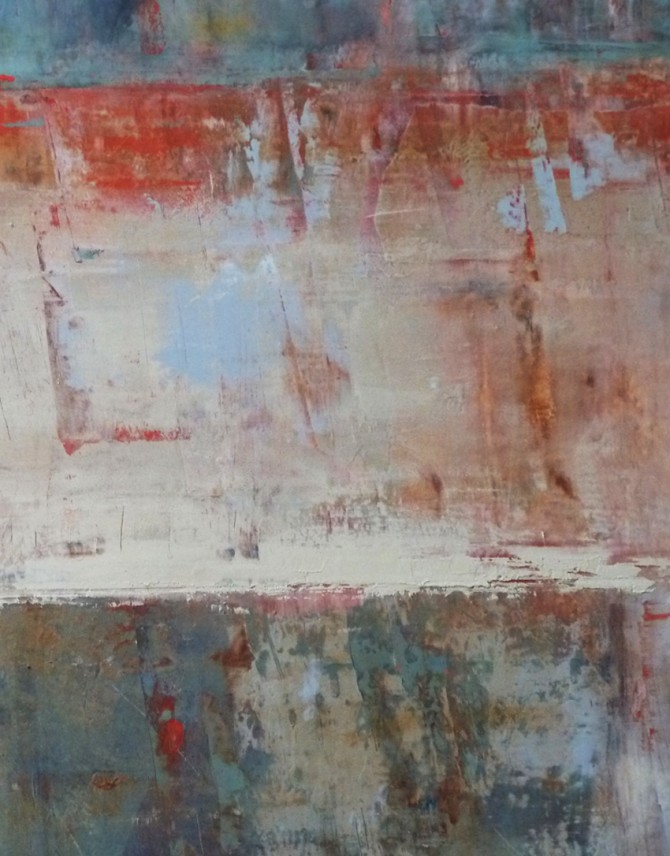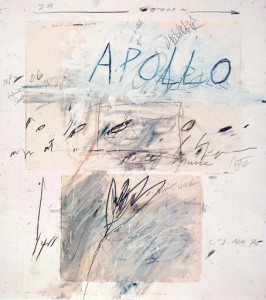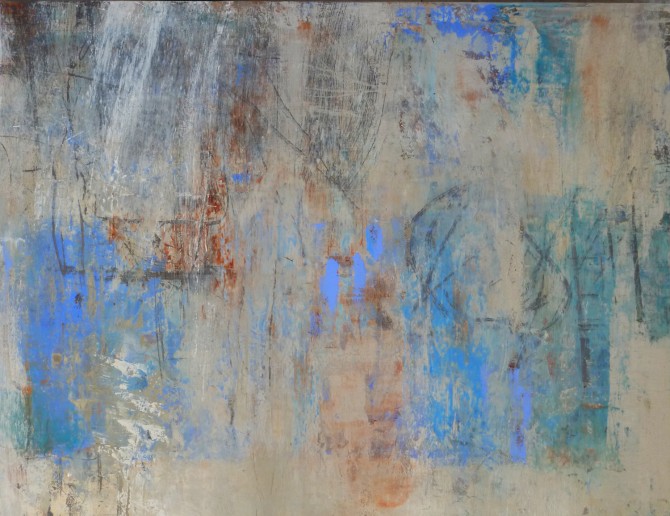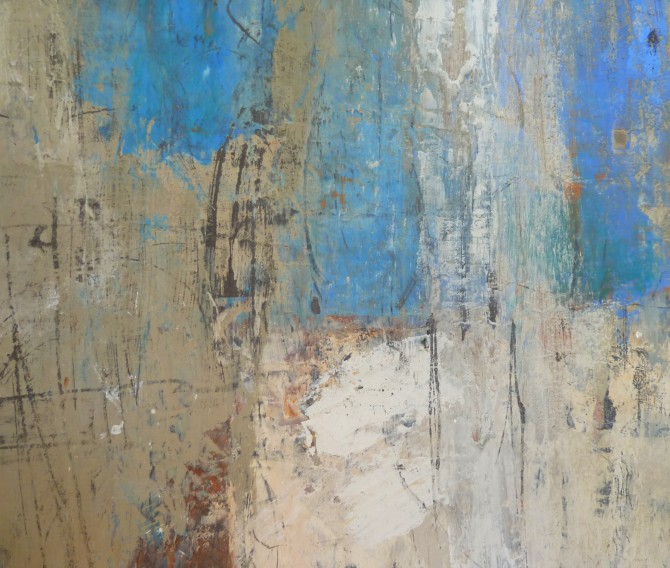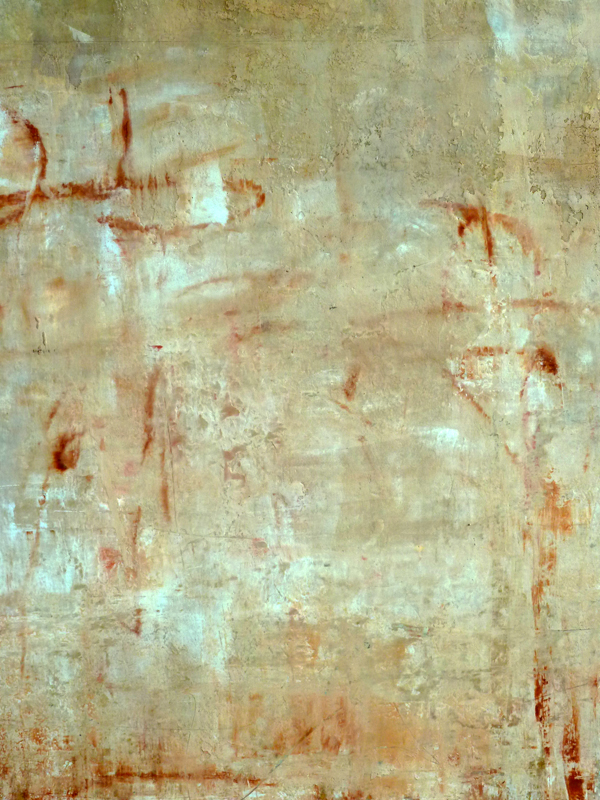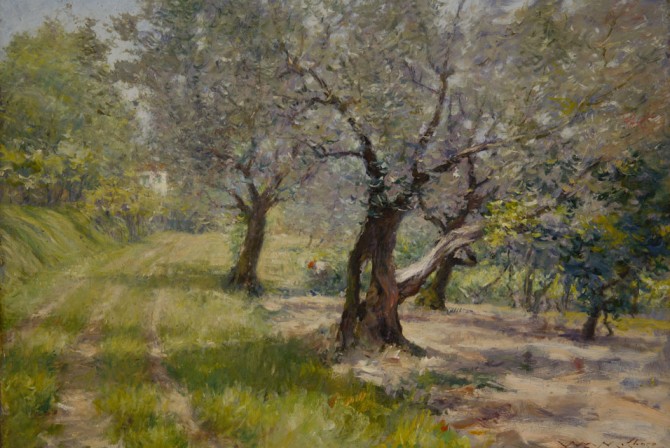 The First Art Newspaper on the Net Established in 1996 Italy Thursday, July 5, 2012 Home Last Week Artists Galleries Museums Photographers Images Subscribe Comments Search Contact Palazzo Strozzi to show Americans in Florence: Sargent and the American Impressionists William Merritt Chase, The Olive Grove, c. 1910, oil on canvas mounted on panel; 59.6 x 85 cm; Chicago (IL), Terra Foundation for American Art, Daniel J. Terra Collection, 1992.25 FLORENCE.- Americans in Florence. Sargent and the American Impressionists on view at Palazzo Strozzi, Florence , from 3 March to 15 July 2012, sets out to illustrate the extremely fertile and multifaceted relationship that the painters of the New World established with Florence and other cities in Tuscany between the mid 19th century and the World War 1. After the end of the American Civil War, there was a substantial increase in the number of American artists travelling to Europe , although, of course, the 18th century Grand Tour tradition had never really died. The painters’ main destinations were Florence , Venice and Rome , cities which the artists idolised in their eagerness to explore their ancient monuments and to take their own measure against the art of the past. They were also attracted by the charm and variety of the landscape, so different from the countryside back home, by the light, by the evocative and atmospheric panoramic views, and by the picturesque charm of the local people. The exhibition is divided into five sections with works by over thirty Americans artists who worked in Florence . Some, like John Singer Sargent, are famous, while the work of other less well-known artists is being shown in Italy for the first time. On returning home, they all became celebrated painters and authoritative masters who played a crucial role in forming the new generation of American painters and in forging the birth of a national school of painting. Their paintings dialogue in the sections of the exhibition with those by Florentine and Tuscan painters including Telemaco Signorini, Vittorio Corcos and Michele Gordigiani, whose work came closest to the sophisticated manner, so rich in literary allusions, that was favoured and nurtured by the most exclusive circles in that cosmopolitan colony. Section 1. Room with a View This section focuses on the places where the Americans’ daily life was played out in Florence . Sargent’s The Hotel Room is typical of their first encounter with the city, involving an inevitable sojourn in a hotel in the centre to give them the time to explore and look for somewhere more appropriate to stay, far from the din, the poverty and the filth of the metropolis. Henry James, an illustrious American writer of the same generation, describes Florence as lethargically overlooking its sluggish green river, as in Lorenzo Gelati’s painting View of Florence with Washing hanging out to dry, “basking” in its decadent beauty, brimming with that atmosphere of the past which James and other Americans were aware was so lacking in their own country. Similarly, the market place, as shown in Telemaco Signorini’s painting, was a discovery for the Americans, with its hubbub, colours, smells and dirt, not to mention the threat represented by beggars and pickpockets. The aim of these painters and their intellectual friends was to take up residence just outside Florence , in a villa in the hills, such as the village of Batelli in View of Piagentina painted by Silvestro Lega, then in a country setting that has been totally swallowed up by the expanding city today. Section 2. Americans in Florence The second section consists of a gallery of self-portraits and portraits of the exhibition’s leading players, the American artists who spent time in Florence , whose work forms the heart of the exhibitions’ subsequent themes. These include Sargent, Frank Duveneck, William Merritt Chase, Cecilia Beaux, Edmund Charles Tarbell, Robert Vonnoh, Thomas Eakins and Frederick Childe Hassam, all of whom were ensnared in the engrossing experience of the Old World, and their search for a personal ‘room with a view’ capable of unveiling the aesthetic and literary mystery of a city to which some of them would later donate their self-portraits (now in the Uffizi). Alongside these painters, the portraits of Vernon Lee and Henry James evoke the presence of the large Anglo-American colony of scholars, collectors, writers and art critics, who in a singular melding of personalities and proclivities, projected onto Florence and its surroundings the utopian ideal of a perennial Renaissance. Section 3. The Circle of Egisto Fabbri: Scholars and Painters This section not only reconstructs the environment in which the influential Italian-American collector Egisto Fabbri’s artistic education took place, beginning at the school of Julian Alden Weir in America and continuing in Paris in the shadow of Cézanne, Degas and Pissarro, it also reconstructs the American acquaintances of the young Fabbri who, when he finally returned to Florence, was to devote his energy to the cult of Cézanne and to a spirituality of Symbolist inspiration. Alongside the work of William Morris Hunt and John La Farge, masters of the younger generation setting out for Europe, the section will also include paintings by Mabel Hooper La Farge (John’s daughter-in-law) and Mary Cassatt, both of whom were Fabbri’s friends; by James Abbot McNeill Whistler and by Sargent himself, who portrayed the leading players in the American society that Egisto frequented, its eccentric and cosmopolitan aspirations acted out against the splendid backdrop of the Florentine hills. Section 4. The Image of Florence and Tuscany Here the visitor encounters views of the city and its surroundings painted in accordance with the literary standards introduced by the novels of Edward Morgan Foster and the literary transfigurations of Edith Wharton, Maurice Hewlett and Elisabeth Pennel, who were to ‘invent’ the Tuscan countryside we can still recognise today in certain unchanged vistas, and with which the American painters George Inness, Elihu Vedder, the Duvenecks, Hassam and Merritt Chase proved to be perfectly at ease, translating its variety into sun-drenched naturalistic snapshots or into views prompted by sudden moods or by dreams of a bygone era. Selected watercolours that Sargent devoted to the serene elegance of villa life, alongside others inspired by the gardens of Florence and Lucca , by the Tuscan countryside and by the Carrara marble quarries, provide us with a significant anthology of the highest quality, illustrating this peculiarly American way of interpreting the Italian landscape. Section 5. America through the Lens of Painting and Literature The last section takes the visitor across the Atlantic , in the wake of the American artists who returned home brimming with enthusiasm and experience. These paintings were almost all produced by artists who had painted Florence and Tuscany and whose careers benefited enormously from the experience in the Old World . This was a very different decision from that made by Whistler, Cassatt and Sargent, who elected to stay in Europe , although they were inevitably somewhat nostalgic exiles. Tarbell, Hassam, Weir, Benson, Chase, Cassatt and Beaux painted the American landscape and domestic interiors, and portrayed women or leading personalities in American politics and society. Many, on returning from Europe, became the younger generations’ teachers and it was this new graft, nurtured also by the collections of European old masters and modern art being put together by America’s wealthiest families with advice from the artists themselves (Cassatt, Chase), that forged America’s first national school of painting. Today’s News December 14, 2011 The Wine of Saint Martin’s Day by Bruegel the Elder now on display at the Museo del Prado Israeli parliament puts Holocaust mastermind Adolf Eichmann items on display Storied 16th century pearl from the collection of Elizabeth Taylor makes history at Christie’s Alexander Graham Bell recordings from 1880s played on a computer at the Library of Congress For the first time in Spain: The work of photographer Gotthard Schuh at Fundacion Mapfre SMU Meadows School of the Arts announces recipients of third annual Meadows Prize Palazzo Strozzi to show Americans in Florence: Sargent and the American Impressionists White Cube Bermondsey presents artist Anselm Kiefer’s “Il Mistero delle Cattedrali” Brilliant success of the sale of Russian art and several world records for photographs of the imperial family National Portrait Gallery, London announces Call For Entries for the BP Portrait Award 2012 Bonhams to hold San Francisco based period Art and Design auction in late January The Word of God by Jeffrey Vallance at The Andy Warhol Museum in Pittsburgh The Art of the Brick: LEGO sculptures by Nathan Sawaya at the Morris Museum For its 3rd edition, Menasart-Fair becomes Beirut Art Fair Tribeca Issey Miyake unveils new light sculpture by Grimanesa Amorós Dana Melamed opens first exhibition at Lesley Heller Workspace Georgia Museum of Art exhibits 30 pieces of Lycett china Tyrannosaurus rex tooth from Montana nets $56K+ at LA auction Most Popular Last Seven Days 1.- Rare Napoleon Bonaparte letter exhibiting English skills sells at auction for $405,000 2.- Five year old Aelita Andre returns to Agora Gallery with a new collection of artwork 3.- First comprehensive exhibition in three decades of George Bellows’ prolific career to open at National Gallery of Art 4.- Billionaire Russian investor Vladimir Potanin gives DC’s Kennedy Center $5 Million 5.- Laguna Art Museum opens a retrospective on artist Clarence Hinkle and The Group of Eight 6.- New Jersey-born Artist Dan Colen’s first solo exhibition in Paris opens at Gagosian Gallery 7.- Researchers find crude Spanish cave paintings to be older than 40,800 years 8.- Bruce Munro’s first one-man show touches hearts across 23 acres at Longwood Gardens 9.- Centre national de l’audiovisuel in Luxembourg to open a major space for photography 10.- 18th sculpture in UC San Diego’s Stuart Collection is both homey and disorienting Museums, Exhibits, Artists, Milestones, Digital Art, Architecture, Photography, Photographers, Special Photos, Special Reports, Featured Stories, Auctions, Art Fairs, Anecdotes, Art Quiz, Education, Mythology, 3D Images, Last Week, . Founder: Ignacio Villarreal Editor & Publisher: Jose Villarreal – Consultant: Ignacio Villarreal Jr. Art Director: Juan José Sepúlveda – Marketing: Carla Gutiérrez Web Developer: Gabriel Sifuentes – Special Contributor: Liz Gangemi Special Advisor: Carlos Amador – Contributing Editor: Carolina Farias Royalville Communications, Inc produces: ignaciovillarreal.org theavemaria.org juncodelavega.org facundocabral-elfinal.org Founder’s Site. The most varied versions of this beautiful prayer. Hommage to a Mexican poet. Hommage
The First Art Newspaper on the Net Established in 1996 Italy Thursday, July 5, 2012 Home Last Week Artists Galleries Museums Photographers Images Subscribe Comments Search Contact Palazzo Strozzi to show Americans in Florence: Sargent and the American Impressionists William Merritt Chase, The Olive Grove, c. 1910, oil on canvas mounted on panel; 59.6 x 85 cm; Chicago (IL), Terra Foundation for American Art, Daniel J. Terra Collection, 1992.25 FLORENCE.- Americans in Florence. Sargent and the American Impressionists on view at Palazzo Strozzi, Florence , from 3 March to 15 July 2012, sets out to illustrate the extremely fertile and multifaceted relationship that the painters of the New World established with Florence and other cities in Tuscany between the mid 19th century and the World War 1. After the end of the American Civil War, there was a substantial increase in the number of American artists travelling to Europe , although, of course, the 18th century Grand Tour tradition had never really died. The painters’ main destinations were Florence , Venice and Rome , cities which the artists idolised in their eagerness to explore their ancient monuments and to take their own measure against the art of the past. They were also attracted by the charm and variety of the landscape, so different from the countryside back home, by the light, by the evocative and atmospheric panoramic views, and by the picturesque charm of the local people. The exhibition is divided into five sections with works by over thirty Americans artists who worked in Florence . Some, like John Singer Sargent, are famous, while the work of other less well-known artists is being shown in Italy for the first time. On returning home, they all became celebrated painters and authoritative masters who played a crucial role in forming the new generation of American painters and in forging the birth of a national school of painting. Their paintings dialogue in the sections of the exhibition with those by Florentine and Tuscan painters including Telemaco Signorini, Vittorio Corcos and Michele Gordigiani, whose work came closest to the sophisticated manner, so rich in literary allusions, that was favoured and nurtured by the most exclusive circles in that cosmopolitan colony. Section 1. Room with a View This section focuses on the places where the Americans’ daily life was played out in Florence . Sargent’s The Hotel Room is typical of their first encounter with the city, involving an inevitable sojourn in a hotel in the centre to give them the time to explore and look for somewhere more appropriate to stay, far from the din, the poverty and the filth of the metropolis. Henry James, an illustrious American writer of the same generation, describes Florence as lethargically overlooking its sluggish green river, as in Lorenzo Gelati’s painting View of Florence with Washing hanging out to dry, “basking” in its decadent beauty, brimming with that atmosphere of the past which James and other Americans were aware was so lacking in their own country. Similarly, the market place, as shown in Telemaco Signorini’s painting, was a discovery for the Americans, with its hubbub, colours, smells and dirt, not to mention the threat represented by beggars and pickpockets. The aim of these painters and their intellectual friends was to take up residence just outside Florence , in a villa in the hills, such as the village of Batelli in View of Piagentina painted by Silvestro Lega, then in a country setting that has been totally swallowed up by the expanding city today. Section 2. Americans in Florence The second section consists of a gallery of self-portraits and portraits of the exhibition’s leading players, the American artists who spent time in Florence , whose work forms the heart of the exhibitions’ subsequent themes. These include Sargent, Frank Duveneck, William Merritt Chase, Cecilia Beaux, Edmund Charles Tarbell, Robert Vonnoh, Thomas Eakins and Frederick Childe Hassam, all of whom were ensnared in the engrossing experience of the Old World, and their search for a personal ‘room with a view’ capable of unveiling the aesthetic and literary mystery of a city to which some of them would later donate their self-portraits (now in the Uffizi). Alongside these painters, the portraits of Vernon Lee and Henry James evoke the presence of the large Anglo-American colony of scholars, collectors, writers and art critics, who in a singular melding of personalities and proclivities, projected onto Florence and its surroundings the utopian ideal of a perennial Renaissance. Section 3. The Circle of Egisto Fabbri: Scholars and Painters This section not only reconstructs the environment in which the influential Italian-American collector Egisto Fabbri’s artistic education took place, beginning at the school of Julian Alden Weir in America and continuing in Paris in the shadow of Cézanne, Degas and Pissarro, it also reconstructs the American acquaintances of the young Fabbri who, when he finally returned to Florence, was to devote his energy to the cult of Cézanne and to a spirituality of Symbolist inspiration. Alongside the work of William Morris Hunt and John La Farge, masters of the younger generation setting out for Europe, the section will also include paintings by Mabel Hooper La Farge (John’s daughter-in-law) and Mary Cassatt, both of whom were Fabbri’s friends; by James Abbot McNeill Whistler and by Sargent himself, who portrayed the leading players in the American society that Egisto frequented, its eccentric and cosmopolitan aspirations acted out against the splendid backdrop of the Florentine hills. Section 4. The Image of Florence and Tuscany Here the visitor encounters views of the city and its surroundings painted in accordance with the literary standards introduced by the novels of Edward Morgan Foster and the literary transfigurations of Edith Wharton, Maurice Hewlett and Elisabeth Pennel, who were to ‘invent’ the Tuscan countryside we can still recognise today in certain unchanged vistas, and with which the American painters George Inness, Elihu Vedder, the Duvenecks, Hassam and Merritt Chase proved to be perfectly at ease, translating its variety into sun-drenched naturalistic snapshots or into views prompted by sudden moods or by dreams of a bygone era. Selected watercolours that Sargent devoted to the serene elegance of villa life, alongside others inspired by the gardens of Florence and Lucca , by the Tuscan countryside and by the Carrara marble quarries, provide us with a significant anthology of the highest quality, illustrating this peculiarly American way of interpreting the Italian landscape. Section 5. America through the Lens of Painting and Literature The last section takes the visitor across the Atlantic , in the wake of the American artists who returned home brimming with enthusiasm and experience. These paintings were almost all produced by artists who had painted Florence and Tuscany and whose careers benefited enormously from the experience in the Old World . This was a very different decision from that made by Whistler, Cassatt and Sargent, who elected to stay in Europe , although they were inevitably somewhat nostalgic exiles. Tarbell, Hassam, Weir, Benson, Chase, Cassatt and Beaux painted the American landscape and domestic interiors, and portrayed women or leading personalities in American politics and society. Many, on returning from Europe, became the younger generations’ teachers and it was this new graft, nurtured also by the collections of European old masters and modern art being put together by America’s wealthiest families with advice from the artists themselves (Cassatt, Chase), that forged America’s first national school of painting. Today’s News December 14, 2011 The Wine of Saint Martin’s Day by Bruegel the Elder now on display at the Museo del Prado Israeli parliament puts Holocaust mastermind Adolf Eichmann items on display Storied 16th century pearl from the collection of Elizabeth Taylor makes history at Christie’s Alexander Graham Bell recordings from 1880s played on a computer at the Library of Congress For the first time in Spain: The work of photographer Gotthard Schuh at Fundacion Mapfre SMU Meadows School of the Arts announces recipients of third annual Meadows Prize Palazzo Strozzi to show Americans in Florence: Sargent and the American Impressionists White Cube Bermondsey presents artist Anselm Kiefer’s “Il Mistero delle Cattedrali” Brilliant success of the sale of Russian art and several world records for photographs of the imperial family National Portrait Gallery, London announces Call For Entries for the BP Portrait Award 2012 Bonhams to hold San Francisco based period Art and Design auction in late January The Word of God by Jeffrey Vallance at The Andy Warhol Museum in Pittsburgh The Art of the Brick: LEGO sculptures by Nathan Sawaya at the Morris Museum For its 3rd edition, Menasart-Fair becomes Beirut Art Fair Tribeca Issey Miyake unveils new light sculpture by Grimanesa Amorós Dana Melamed opens first exhibition at Lesley Heller Workspace Georgia Museum of Art exhibits 30 pieces of Lycett china Tyrannosaurus rex tooth from Montana nets $56K+ at LA auction Most Popular Last Seven Days 1.- Rare Napoleon Bonaparte letter exhibiting English skills sells at auction for $405,000 2.- Five year old Aelita Andre returns to Agora Gallery with a new collection of artwork 3.- First comprehensive exhibition in three decades of George Bellows’ prolific career to open at National Gallery of Art 4.- Billionaire Russian investor Vladimir Potanin gives DC’s Kennedy Center $5 Million 5.- Laguna Art Museum opens a retrospective on artist Clarence Hinkle and The Group of Eight 6.- New Jersey-born Artist Dan Colen’s first solo exhibition in Paris opens at Gagosian Gallery 7.- Researchers find crude Spanish cave paintings to be older than 40,800 years 8.- Bruce Munro’s first one-man show touches hearts across 23 acres at Longwood Gardens 9.- Centre national de l’audiovisuel in Luxembourg to open a major space for photography 10.- 18th sculpture in UC San Diego’s Stuart Collection is both homey and disorienting Museums, Exhibits, Artists, Milestones, Digital Art, Architecture, Photography, Photographers, Special Photos, Special Reports, Featured Stories, Auctions, Art Fairs, Anecdotes, Art Quiz, Education, Mythology, 3D Images, Last Week, . Founder: Ignacio Villarreal Editor & Publisher: Jose Villarreal – Consultant: Ignacio Villarreal Jr. Art Director: Juan José Sepúlveda – Marketing: Carla Gutiérrez Web Developer: Gabriel Sifuentes – Special Contributor: Liz Gangemi Special Advisor: Carlos Amador – Contributing Editor: Carolina Farias Royalville Communications, Inc produces: ignaciovillarreal.org theavemaria.org juncodelavega.org facundocabral-elfinal.org Founder’s Site. The most varied versions of this beautiful prayer. Hommage to a Mexican poet. Hommage
More Information: http://www.artdaily.com/index.asp?int_sec=11&int_new=51680&int_modo=1[/url]
Copyright © artdaily.org





